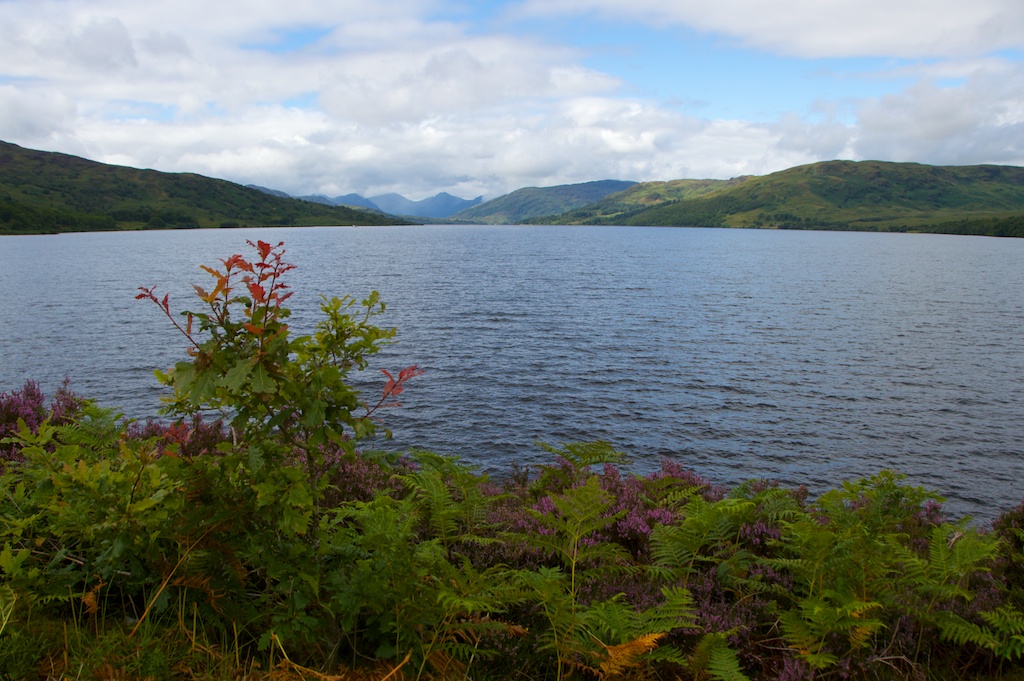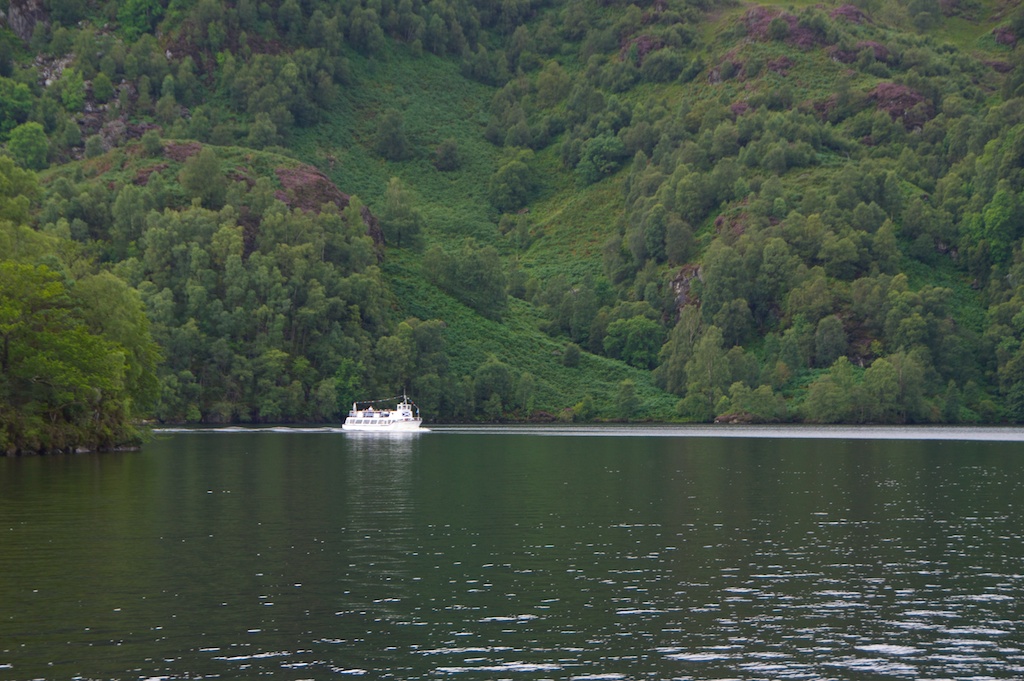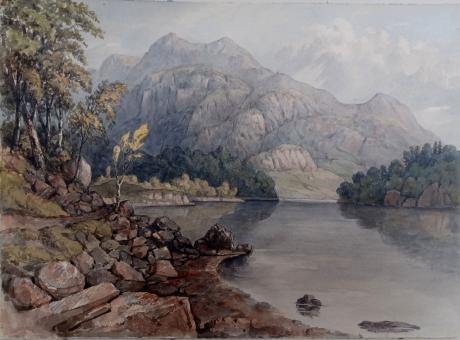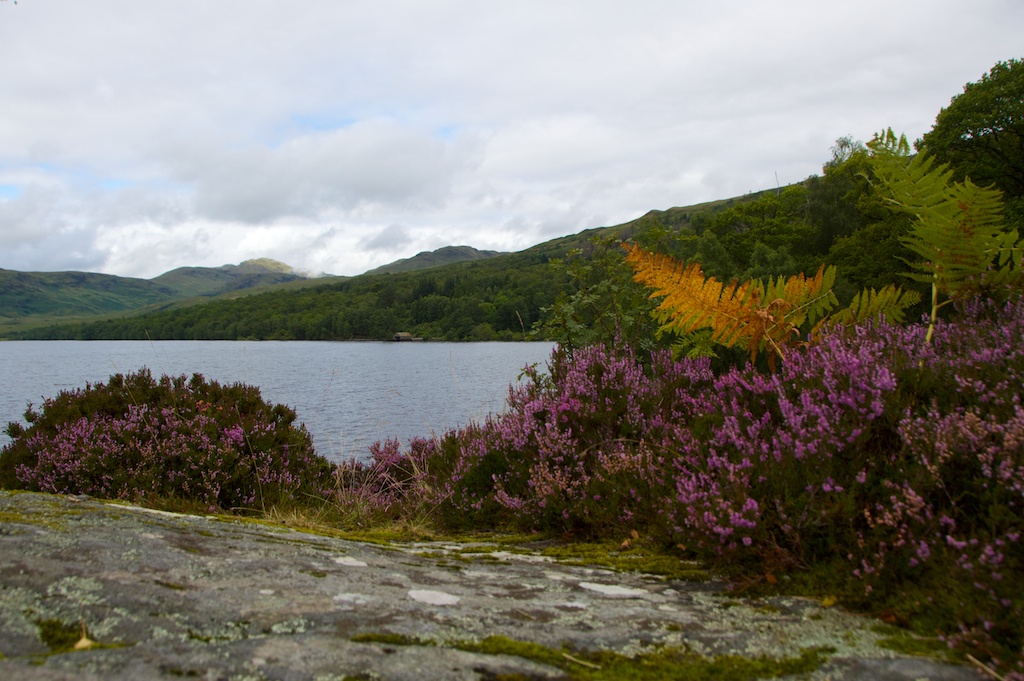inscribed in the margin " Loch Katrine Ellen's Isle" a page from an album inscribed in the frontispage "F W Staines 3 Uplands St Leonards on Sea"
Amelia Jackson, Nee Staines (1842 – 1925) and thence by descent
Ellen’s Isle, one of the islands of Loch Katrine, plays an important role in Sir Walter Scott’s ‘The Lady of the Lake’. It’s also known as Eilean Molach, and appears to be a natural island despite its crannog-like shape. Canmore, the database of the Royal Commission on Ancient & Historical Monuments of Scotland, says that it was a stronghold of the MacGregors in the mid-16th century, but adds that “the island is thickly wooded which may obscure any surviving buildings or fortifications.”
As for the word ‘molach’, one of its meanings in Gaelic appears to be ‘rugged’; I also wonder if there may have been some connection with St Moloc or Moluag, a 6th century Irish missionary who founded a church on the island of Lismore in Argyll. This is pure speculation, however.
Meanwhile, here are some photos of Loch Katrine, taken in late August, along with a few lines from ‘The Lady of the Lake‘. Set in the 1500s, this is a tale of rebellion and intrigue, rivalry and romance; its heroine, Ellen Douglas, is wooed by three suitors including Roderick Dhu, Chief of Clan Alpine. She lives with her family on the wooded island in the loch.
Far up the lengthened lake were spied
Four darkening specks upon the tide,
That, slow enlarging on the view,
Four manned and massed barges grew,
And, bearing downwards from Glengyle,
Steered full upon the lonely isle;
The point of Brianchoil they passed,
And, to the windward as they cast,
Against the sun they gave to shine
The bold Sir Roderick’s bannered Pine.
Nearer and nearer as they bear,
Spears, pikes, and axes flash in air.
Now might you see the tartars brave,
And plaids and plumage dance and wave:
Now see the bonnets sink and rise,
As his tough oar the rower plies;
See, flashing at each sturdy stroke,
The wave ascending into smoke;
See the proud pipers on the bow,
And mark the gaudy streamers flow
From their loud chanters down, and sweep
The furrowed bosom of the deep,
As, rushing through the lake amain,
They plied the ancient Highland strain.
Canto Second, ‘The Island’ from ‘The Lady of the Lake‘
 Looking up Loch Katrine from Brenachoile Point
Looking up Loch Katrine from Brenachoile Point
 The paddle steamer Sir Walter Scott takes visitors on a cruise around the loch
The paddle steamer Sir Walter Scott takes visitors on a cruise around the loch
Francis William Staines was the last of a family of merchants from the City of London. Not only was he a successful businessman but he possessed a large independent fortune, such that he could devote his time to the cultivation of his talents in music and art. He was a brilliant amateur violinist, and also loved to spend much of his time painting. His daughter Amelia and her mother accompanied Mr Staines as he travelled throughout the country finding subjects for his painting. One area of the country that they visited frequently was Scotland and the Lake District, and Amelia grew particularly fond of the dramatic landscape of the Fells. Skelwith Bridge with the view of the hills around it 43 was one of her father’s favourite scenes. He painted landscapes and maritime paintings , exhibited 11 works at the RA including views on the Italian Coast, address in London, Hastings and St Leonards on Sea Susssex.


